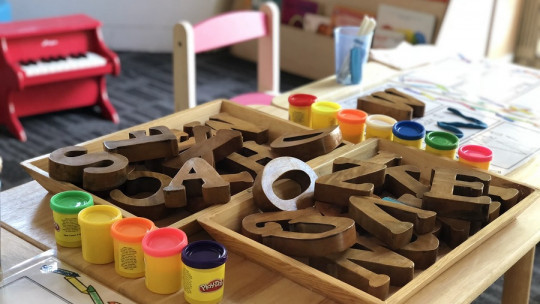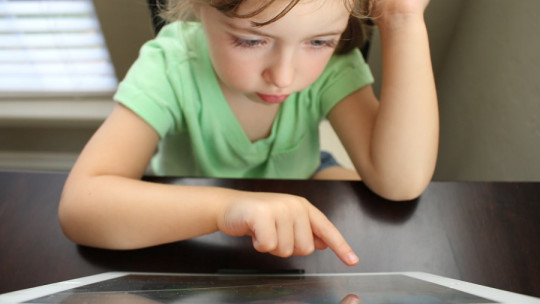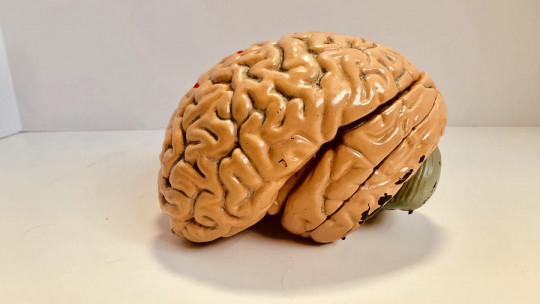It is said that a picture is worth a thousand words, so it is not surprising that our mind prefers to work with visual elements rather than using verbal language. It is true that words allow us to describe reality in detail, but images are directly a representation of that reality.
But although visual thinking seems to be a fundamental aspect of our way of processing information, the truth is that in the educational field graphic methods have been largely left aside and textual and oral explanations of the contents have been prioritized. teach in class.
Nevertheless, In the middle of the last century, a new concept emerged, visual thinking which intended to recover the importance of working with images, both to capture information and to explain it. Let’s see what this pedagogical approach consists of.
What is visual thinking?
Visual thinking or “visual thinking” is a pedagogical approach that maintains that, since the mind prefers to work with images rather than verbalized language the ideal way to create, share, develop and manipulate ideas is to represent them in visual terms.
Thus, visual thinking is both a theoretical framework and a tool that defends the use of graphic resources to be able to express ideas and concepts in a way that is easier to assimilate for our brain, relying on graphic representations of textual and audiovisual content.
1. Importance of visual thinking
Human beings are visual animals and, in fact, Our way of interpreting the world is based largely on what we perceive through sight It is said that about 90% of the information our brain receives is visual and we process images much faster than any information given to us in the form of text or through oral language. Visual information leaves a deeper mark on us than what we read or what we are told.
It is clear that language, both written and oral, is a very sophisticated and useful tool for transmitting our ideas, however, this vehicle for transmitting concepts does not have the immediacy or proximity that an image has, since the image is, in itself, the representation of the pure concept itself. For example, learning what an apple is is much easier to do by seeing an apple in a photo or in real life than by memorizing its definition.
Although the language is very useful, it is neither perceptive nor immediate , in addition to requiring a priori reflection. Written and oral language tells us about what has already been heard, seen or thought, not from direct contact with reality, but rather from a long description of what it is. Although we can think using verbalized language, what some call “Mentalese,” it is not possible to think quickly without resorting to images. In fact, thinking about a concept using images makes that concept better understood and also better remembered.
But although it has been known for quite some time that human beings tend to resort to images, traditional education has downplayed this fact. As written and oral culture developed, it was preferred to resort to written text since it allowed information to be transmitted more easily and unambiguously, but its expressiveness and ease of memorization were also sacrificed.
The idea behind the theorists of visual thinking or “visual thinking” is to recover visual language as a tool to better understand and explain reality Instead of focusing so much on reading scarce texts with descriptive images, resorting to visual support and also inviting learners to describe their ideas using graphs, drawings or pictograms is increasingly being considered a better option to facilitate learning.
2. The figure of Rudolf Arnheim
One cannot talk about visual thinking as a pedagogical doctrine without mentioning one of its greatest exponents: Rudolf Arnheim. In 1969, this German psychologist published a work with the same title, “Visual Thinking”, which, already in the middle of the 20th century, was ahead of time in considering that traditional educational methodologies had failed Vision was a primary means for thinking but had been left aside in the classroom giving priority to written words, which sometimes refer to ideas defined in a way that is too abstract to be understood without images.
Thus, Arnheim maintained that people learn in a much richer way through sight, either by appealing to sensations or nuances, aspects that verbalized language could not adequately express. Visual methods should be introduced in textbooks and classes and see if students could express the ideas seen in class through drawings or visual resources. If they achieved this, it meant that they had managed to internalize and understand what they saw in class in addition to making use of their creativity.
3. Dan Roam Method
Another of the great references of the concept of visual thinking is Dan Roam, who proposed a method to develop it in his book “Your world on a napkin” from 2010 , in which he defends the idea that drawings or images of any type serve to communicate, outline and summarize our ideas better than resorting to written text. However, before transforming a concept into a visual representation, you need to ask yourself a few questions:
Once these questions are answered, we move on to the process of transforming an idea into something visual. To do this, Roam talks about four phases:
1. Look
Information is collected and selected concentrating on the most important thing that faithfully represents the idea.
2. View
Patterns are recognized and the most interesting is selected thinking about the audience that will receive the visual message, appropriately grouping the information you have.
3. Imagine
Information is reorganized detecting what may have escaped us or that may attract the attention of the public receiving the message, in addition to this being the moment in which new ideas are imagined that can give a creative push to the visual representation of the concept to be expressed.
4. Show
Finally the information is synthesized and clarity is given to everything that has been raised in the previous phases. It is at this moment that the idea that has been transformed into a visual concept is shown.
Any visual support can be useful to present any idea. Whether through diagrams, graphs, visual infographics or any visual element, the public can be made easier to assimilate and manage an idea that in textual and oral terms can become something too abstract.
Advantages of promoting visual thinking
Especially at the teaching level, promoting visual thinking implies many advantages, especially because, as we have already mentioned, it helps in the understanding of concepts and ideas that defined textually may not be fully grasped. Although we must not forget that texts are not an element to be dispensed with in education, visual supports must also be in the classroom helping to better assimilate what the textbooks try to express.
But showing images to students not only helps them assimilate the concepts, but also asks them to use their own visual thinking capacity. Asking students to try to graphically express what was explained in class is a very good way to get them to work on that idea, try to understand it and manage it beyond its verbalized definition. The student has to think about the idea, synthesize it and finally represent it in an original way so that what it is is understood. Thus, metacognition and retention of the learning taught in the classroom is promoted.
We also encourage creativity in the classroom, an aspect that is largely neglected in traditional education and is only seen in subjects considered purely artistic such as music or plastic arts. Each individual can have a very different way of representing the same concept and that is not bad, quite the opposite. By asking students to graphically represent a concept given in class, their imagination is given full freedom, something that makes learning seen as a playful and pleasant activity.









